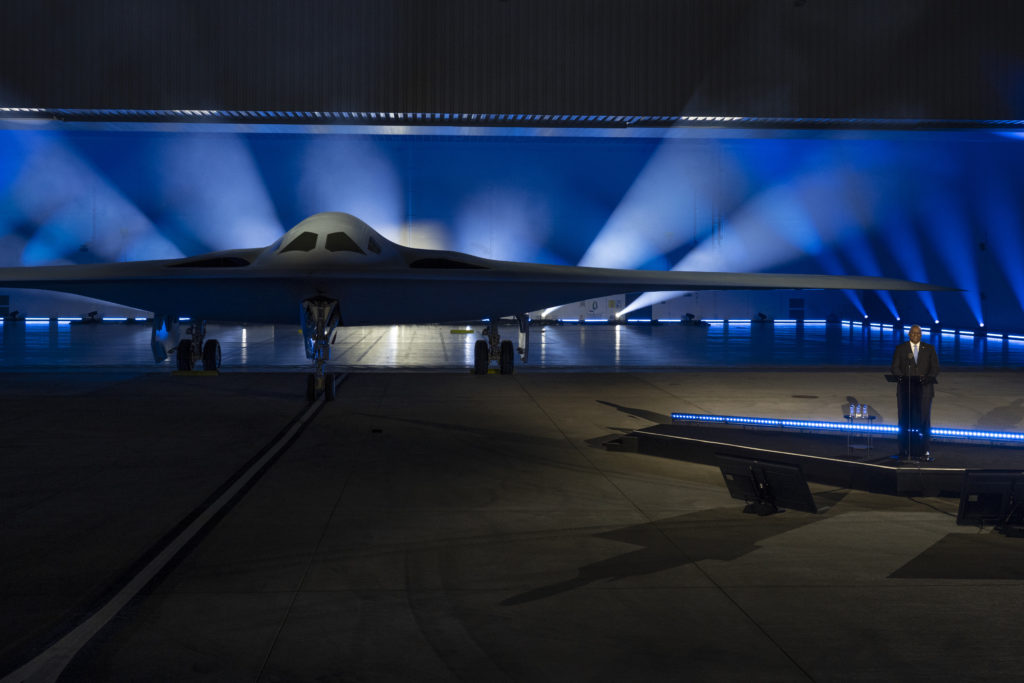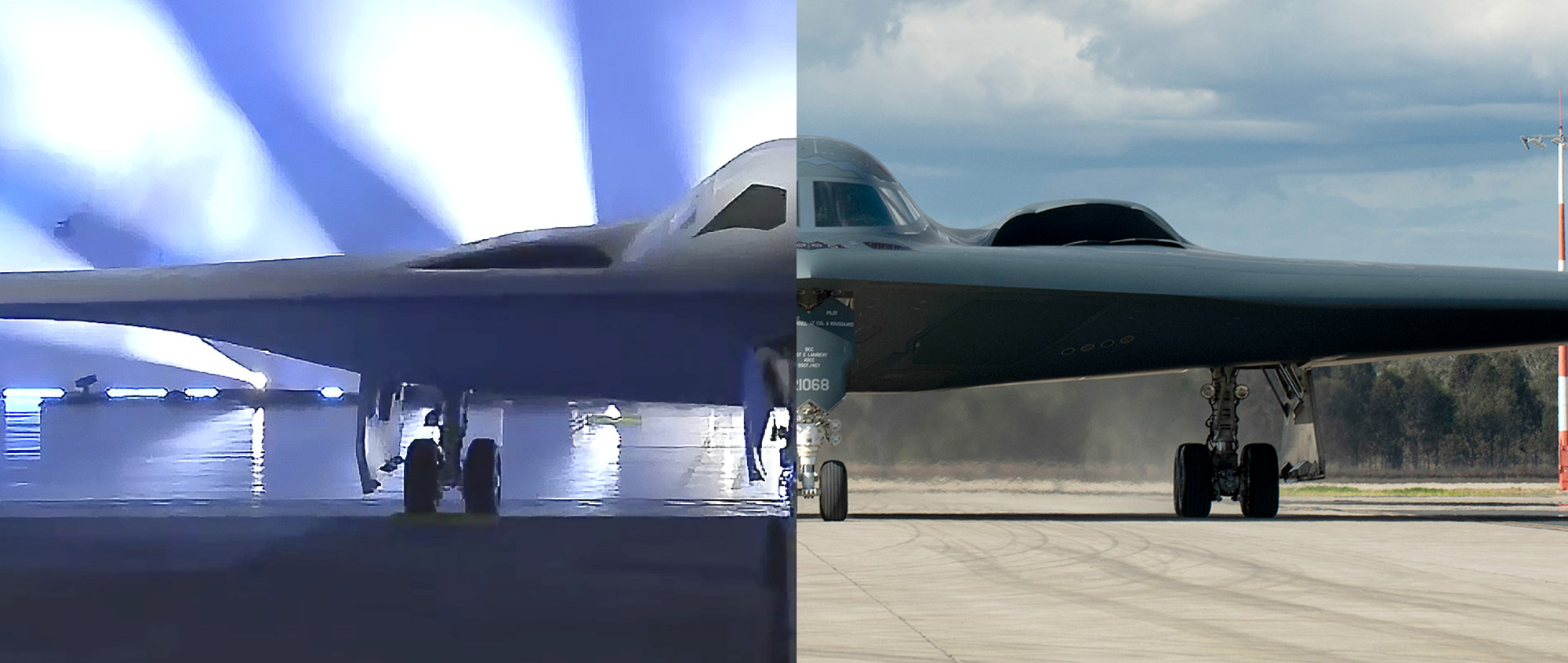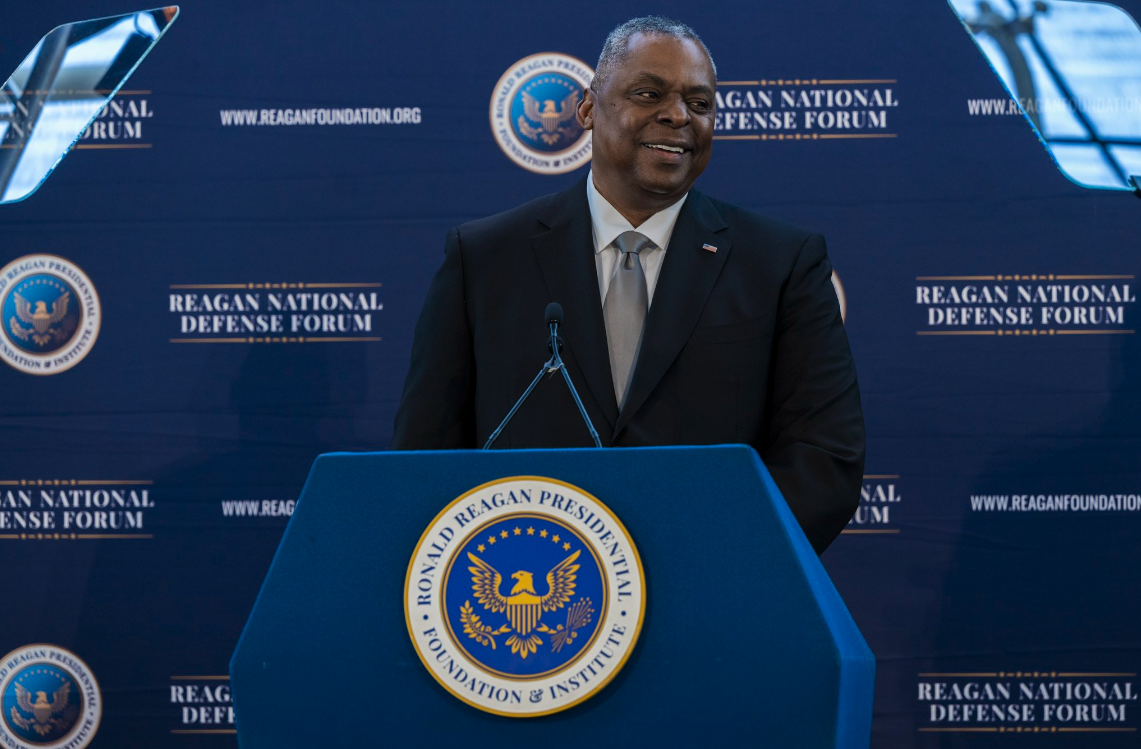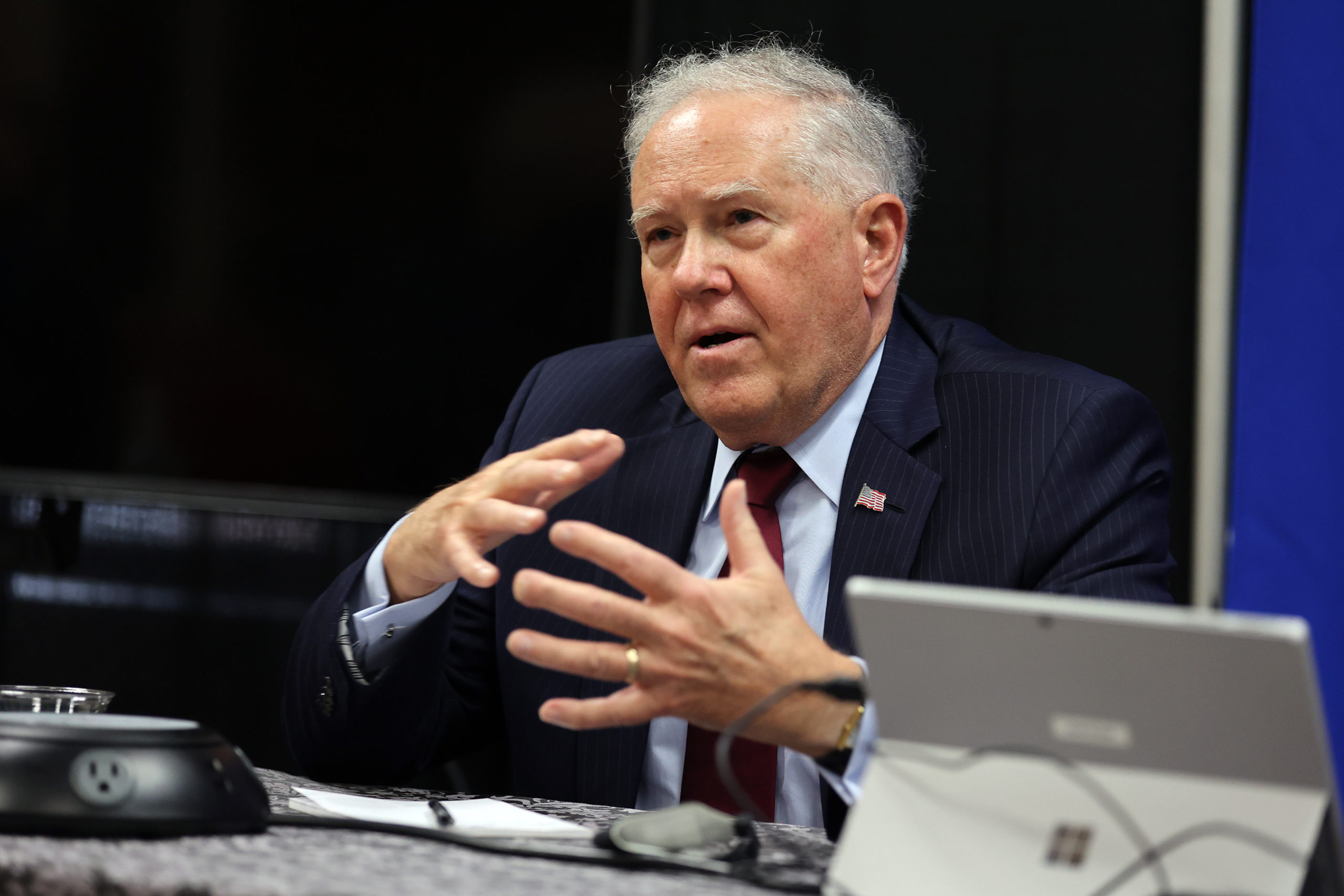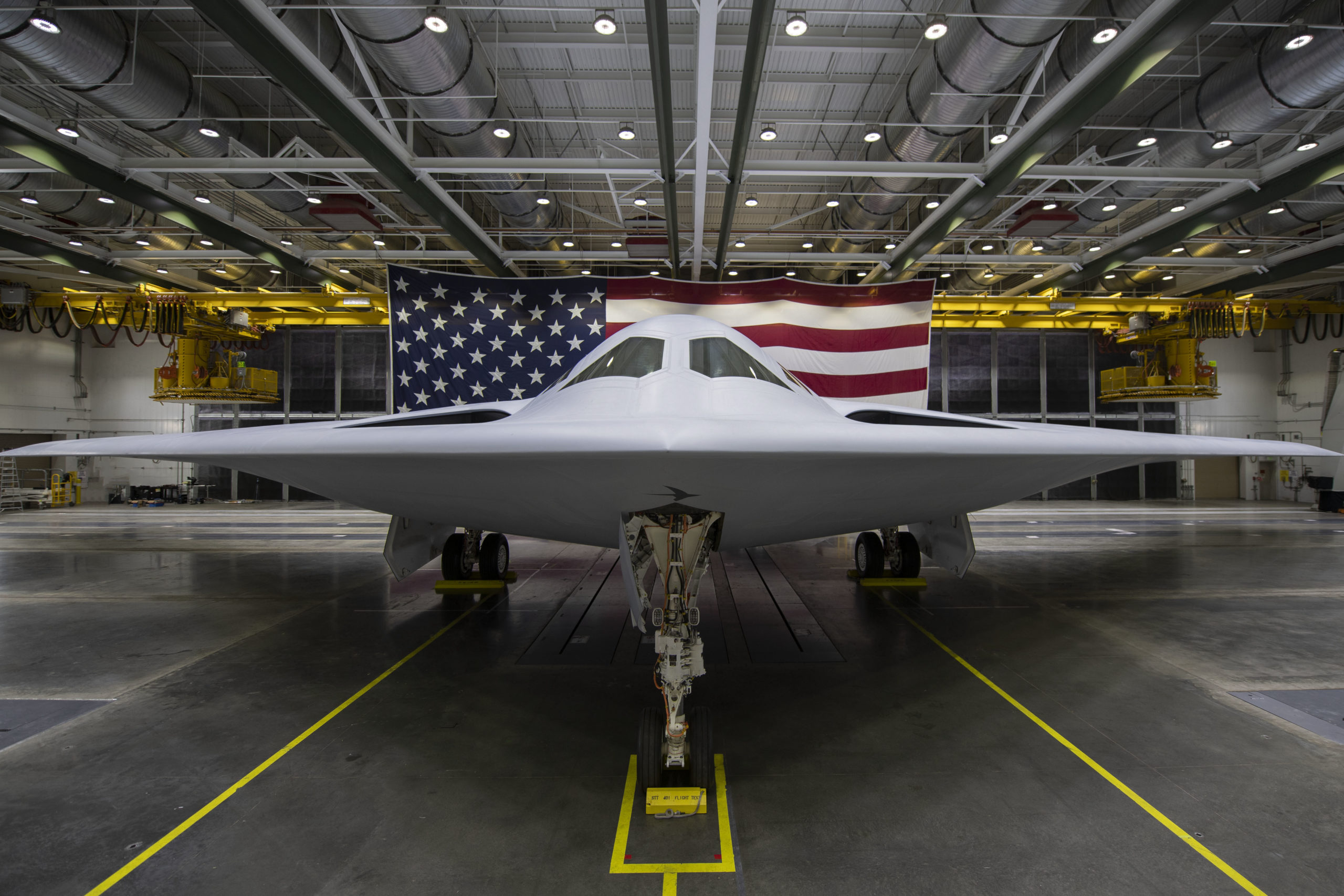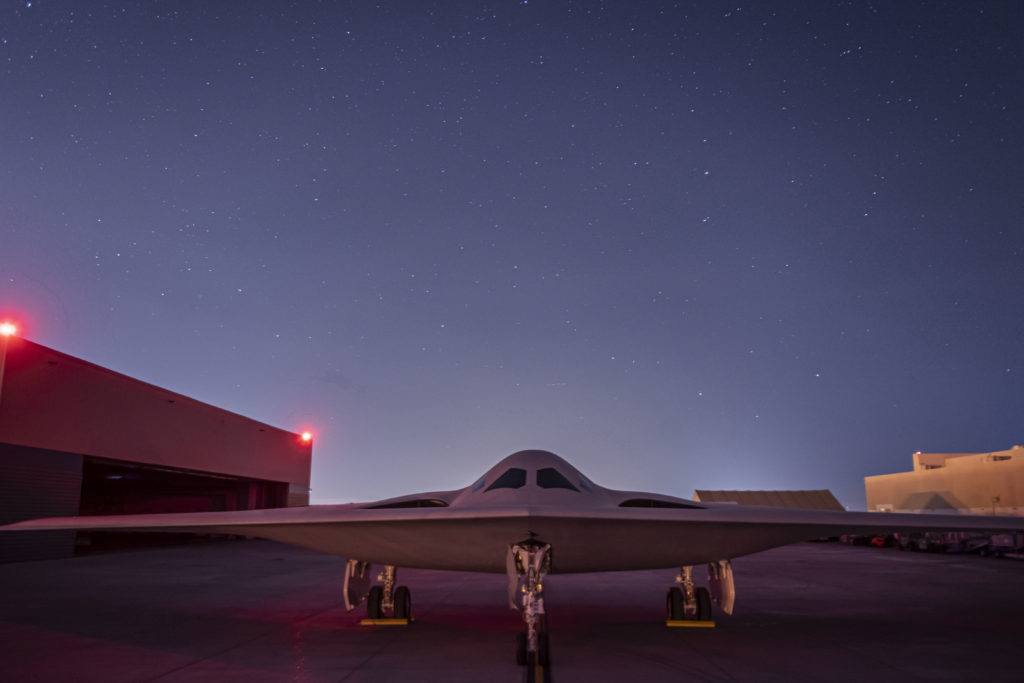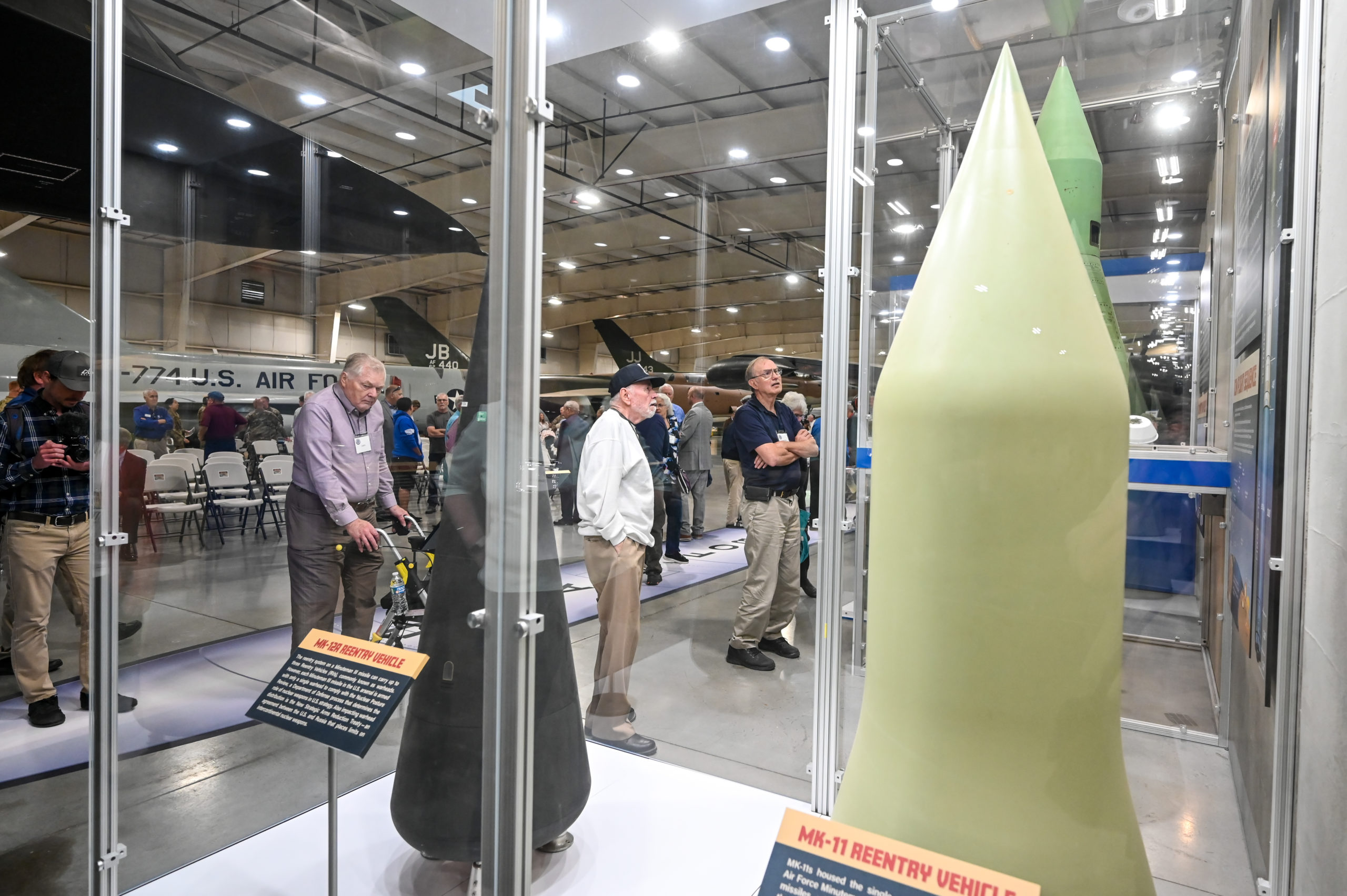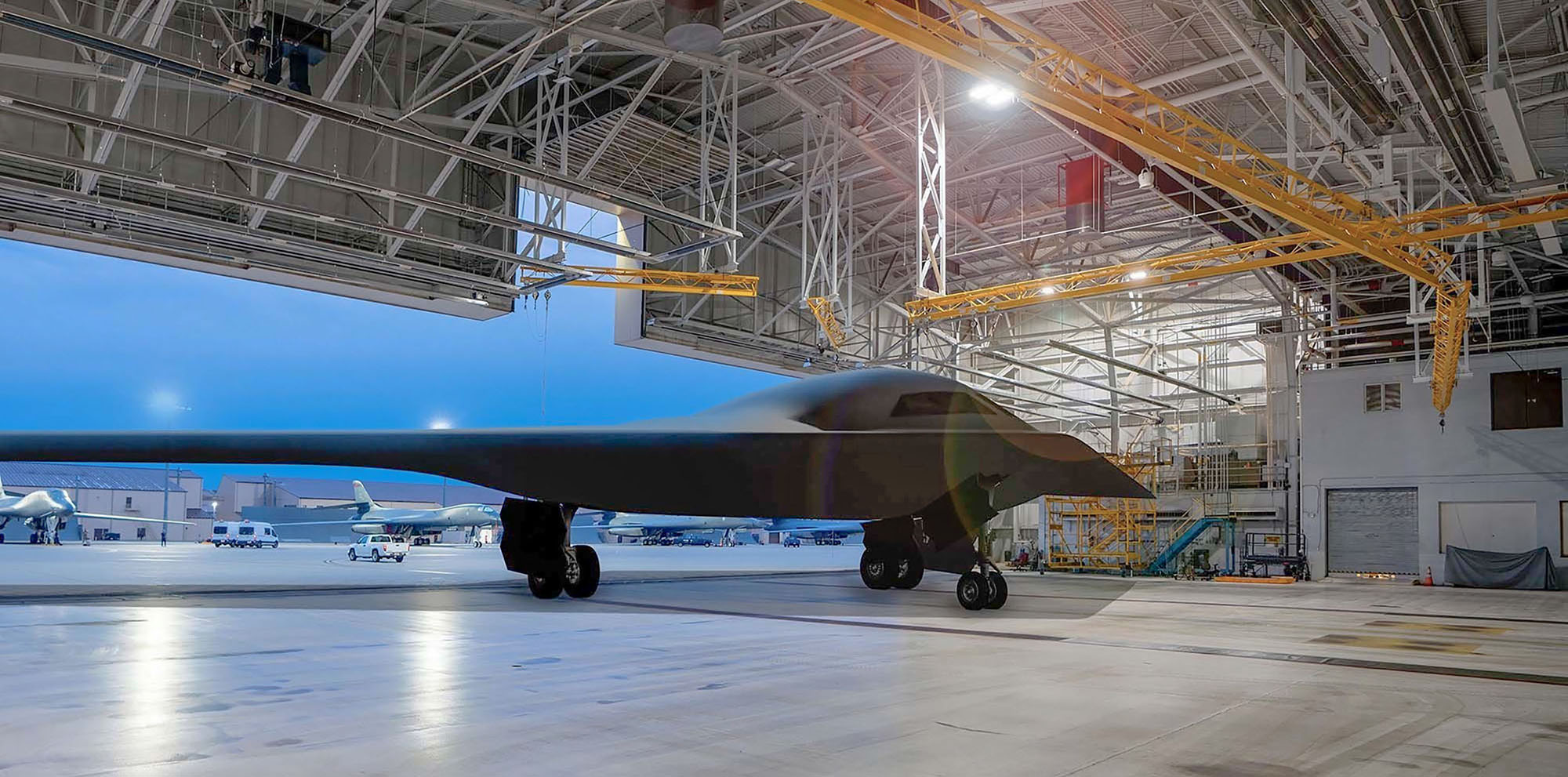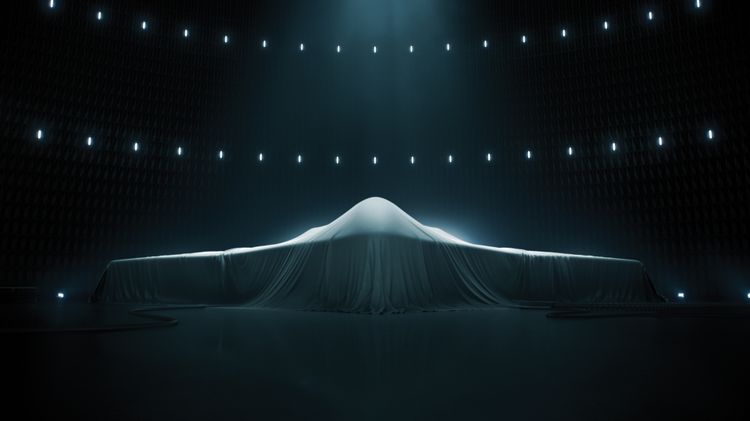The unveiling of the new B-21 bomber was staged to keep many of its innovations under wraps, but more than 34 years of technological advances since the B-2’s 1988 rollout were clearly in evidence.
A senior Northrop Grumman official, briefing reporters before the Dec. 2 rollout of the B-21, called the aircraft “the most advanced stealth aircraft ever built,” with heavy emphasis on making it a “daily flyer,” meaning its maintenance has been streamlined such that it can perform multiple sorties per day without extensive touchups of its stealth features.
Although the official said the majority of what makes the B-21 a “sixth-generation” combat aircraft is “on the inside,” a number of external features point to its evolution from the technology of the B-2, which is also a stealthy flying wing.
1. Intakes
Perhaps the most striking features of the B-21 are its slender, barely-there air intakes. Unlike the higher-rise, scalloped intakes on the B-2, the B-21’s are almost organically a part of its wing root. That’s good for stealth—radar loves abrupt angles and big cavities—but the intakes are so thin and shallow, they seem hardly big enough to swallow enough air to feed the B-21’s engines.
However, a leading aerodynamicist told Air & Space Forces Magazine that “as long as you have enough inlet area to accept the required mass flow of air, your engines will work fine.”
The “real trick,” he said, “is designing an inlet that can handle the distortions and gradients caused by the fact that the air is moving over significant surface area of the inlet before being ingested. That’s more a matter of tailoring the channel shape in the inlet.”
Magnification of images released by the Air Force of the B-21 show a vertical vane in the inlet.
Having the inlet close to the leading edge could also make use of the “Kutta effect,” he said: “the tendency of a fluid to remain attached to a surface rather than separating.” Oversimplified, that means that air moving up and over the leading edge of the wing would flow directly into the inlet, instead of up and over the inlet itself.
The advantage of such slender inlets is that there is less of a cavity for search radars to find, and even less chance of detecting the B-21’s engine fan blades, which are a huge radar reflector. On the B-2, the engines are hidden behind serpentine ducting that shields them from direct view.
In 2018, at a McAleese/Credit Suisse conference, Rep. Rob Wittman (R-Va.), in an unusual disclosure of progress on the classified program, said the B-21 was largely on track but had suffered some setbacks with engine airflow.
“This is a very, very different design as far as airflow,” Wittman revealed at the time, “and there have been some design challenges there.”
There were differences of opinion between engine contractor Pratt & Whitney and the “ducting contractor,” Wittman said, with the latter complaining, “‘There’s only so much air we can move through there,’ and Pratt & Whitney says, ‘No, we need a certain amount of air to go through the front of the engine.’ Then the question is: How do you do that? Do you split [the difference] between the two?”
Pratt & Whitney wanted more air at the inlet, but that would have affected the low-observable design, Wittman reported.
The engine and ducting all have to work together, Wittman observed, adding that “all those things are elements that you would normally expect in an aircraft that’s new, that takes a concept from B-2, refines and uses it on this platform.”
2. Size
Despite persistent rumors—and some defense official comments—that the B-21 would be substantially smaller than the B-2, that was not apparent at the rollout. A rough approximation of the wingspan, made possible by the presence of a B-2 at a Northrop Grumman aircraft a few feet away, suggests the wingspan of the B-21 is perhaps only 22 feet or so shorter than that of the B-2, which would indicate a span of about 150 feet. However, this estimation is fraught because the angle of wing sweepback on the B-21 may be deeper than that of the B-2. A close encounter with the draped B-21 minutes before the unveiling indicated it may have a deeper sweep angle than the B-21, but whether it has a “cranked” or bent shape was unclear.
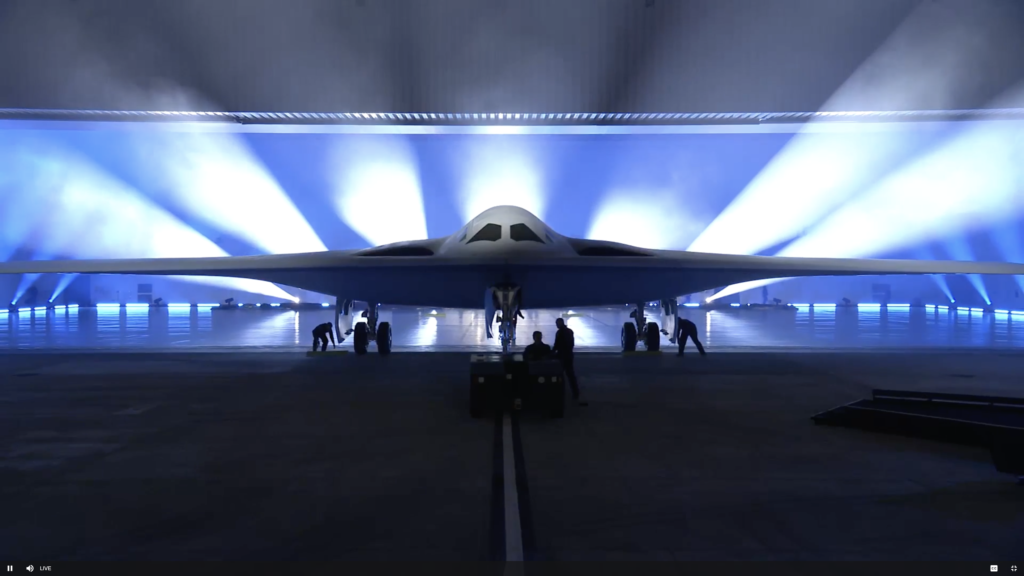
3. Depth
The B-21 has a decidedly deeper and broader keel than the B-2, implying larger weapons bays and potentially more internal fuel. Like the B-2, the B-21 will operate from continental U.S. bases, Defense Secretary Lloyd J. Austin III said in his rollout remarks. The aircraft overall, however, clearly sits on its landing gear higher than the B-2 does. The gear are also two-wheel bogeys rather than the four-wheel bogeys on the B-2.
4. Smoothness
While Herculean efforts were made to make the B-2 as smooth as possible—to thwart radar pickups of seams, panel lines, and protruding fastener heads—the B-21 gave the appearance of an almost sanded-smooth finish, with no shadows or breaks, even at the edges of its canopy. Northrop Grumman officials said the B-21 program has thoroughly dispensed with the methods used on the B-2, such as tape and caulk, to smooth out those breaks in the surface. The B-2’s skin is also designed to be resilient enough that the aircraft can make multiple sorties per day in full stealth mode, whereas the B-2 needed low-observable touch-ups after ever mission. Company officials at the rollout said the B-2 has benefitted from techniques used on the B-21 to reduce the use of tape and improve the aircraft’s stealth resiliency.
5. Cockpit Transparencies
Unlike the B-2’s four-window wrap-around windscreen, the B-21 has an unusual geometry of two trapezoidal forward windows and two long side widows. The edges of the windows seemed thoroughly contiguous with the airplane’s solid surfaces; no seams, edges or framing seemed in evidence. Coupled with the B-21’s deeper keel, the impression of a “flying saucer” is pronounced, though surely unintentional.
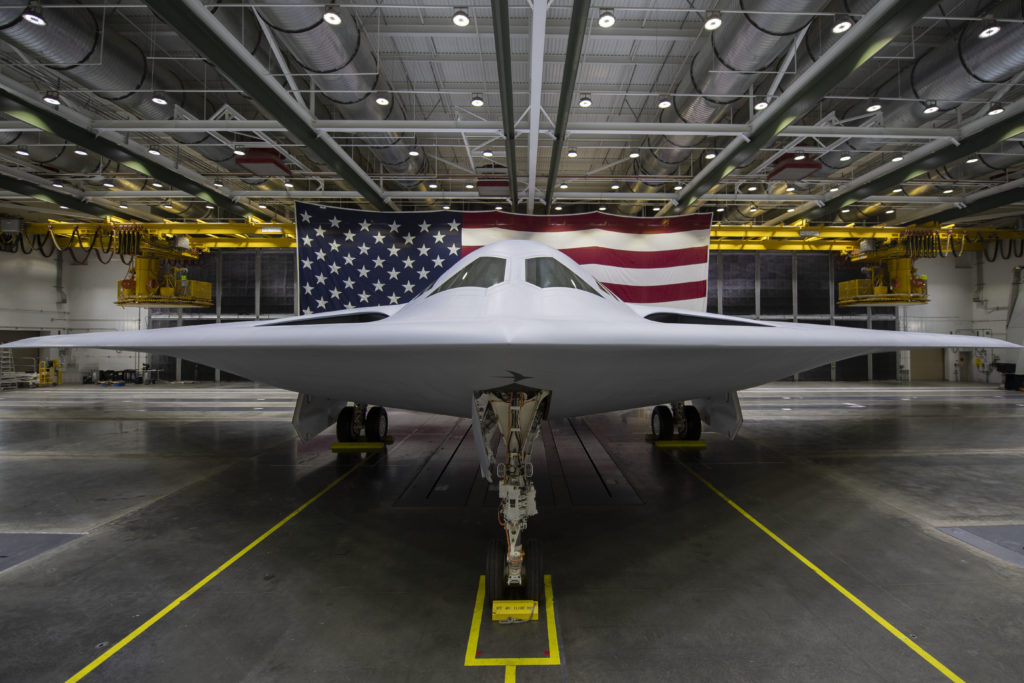
6. Gear Doors
The landing gear doors on the B-21 are more simplified than the serrated-edge doors on the B-2. The “tail code” of ED—for Edwards Air Force Base, Calif., where testing will take place—appeared on the main gear doors, just as the tail codes of Whiteman Air Force Base, Mo., appear on the B-2’s gear doors. The first B-21 bears the serial “00001.” Stenciled on the aircraft just below the nose of the B-21 is the stylized wing symbol of Northrop Grumman flight test.
7. ‘Hawk’s Beak’
The B-2 has a pronounced “beak” at the very tip of its leading edge. A brief side view of the B-21 at the rollout showed that feature also exists on the new bomber, though it is set further ahead of the windscreen and is longer and flatter.
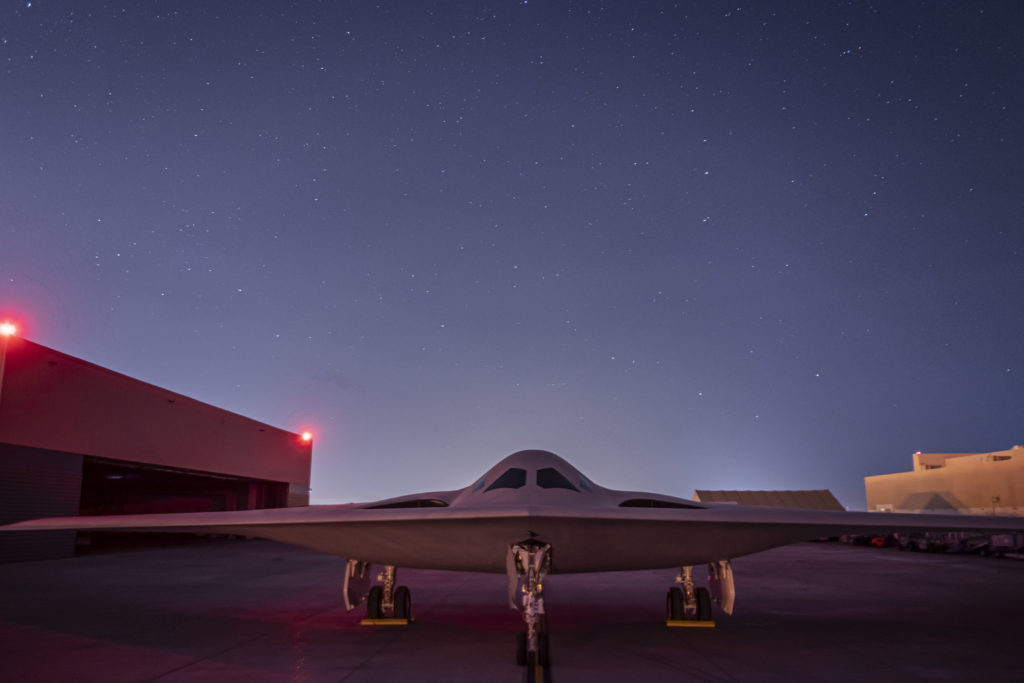
8. Color
While the B-2 wears wrap-around FS 36118 “Gunship Gray” paint with variations around taped areas, effective for night operations, the B-21 wears an overall light gray, possibly FS36375 “Light Compass Ghost Gray,” which may aid in reducing its visual and infrared signature in the daytime.
More details of the B-21 are not expected for some time. The tail of the aircraft was not visible at the rollout, and program officials said they plan to keep that area under wraps as long as possible.
However, the reason for the B-21 being rolled out at this time is that it will soon be performing outside-the-factory engine runs and taxi tests, meaning it will be publicly visible, if at a distance. Once that happens, long telephoto images from photographers camped out on public land outside Plant 42 in Palmdale, Calif., will doubtlessly begin to appear, confirming or debunking initial speculation. The first flight of the B-21 is expected in mid-2023.
